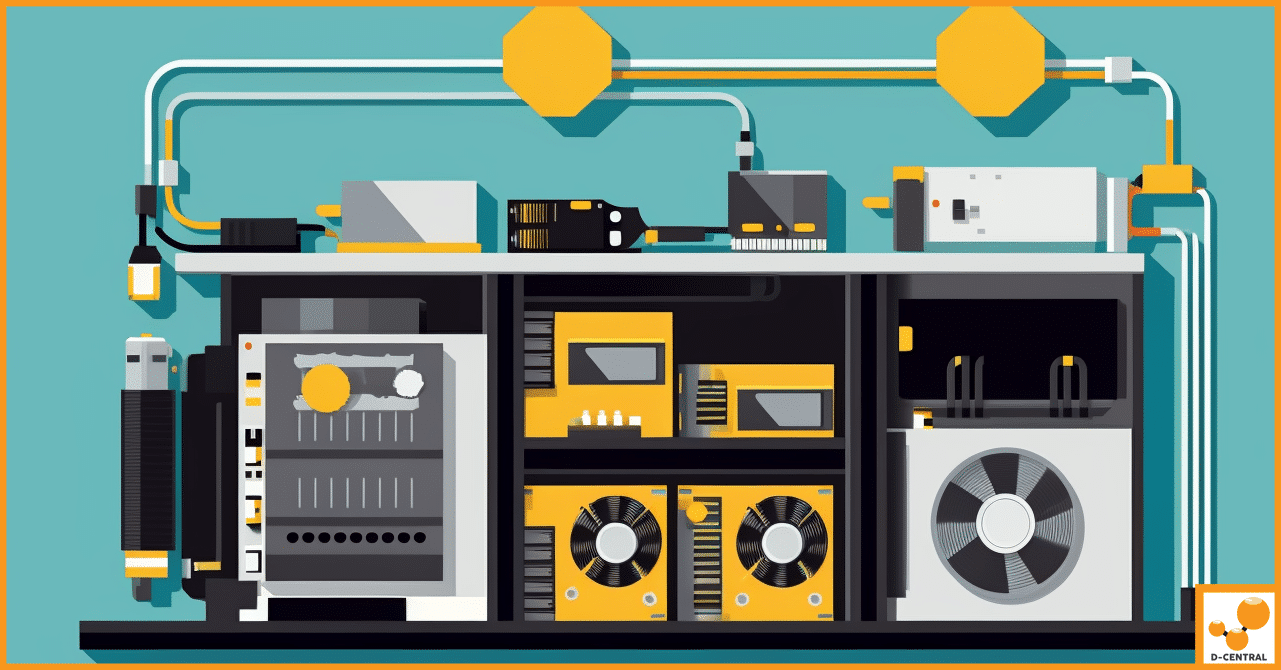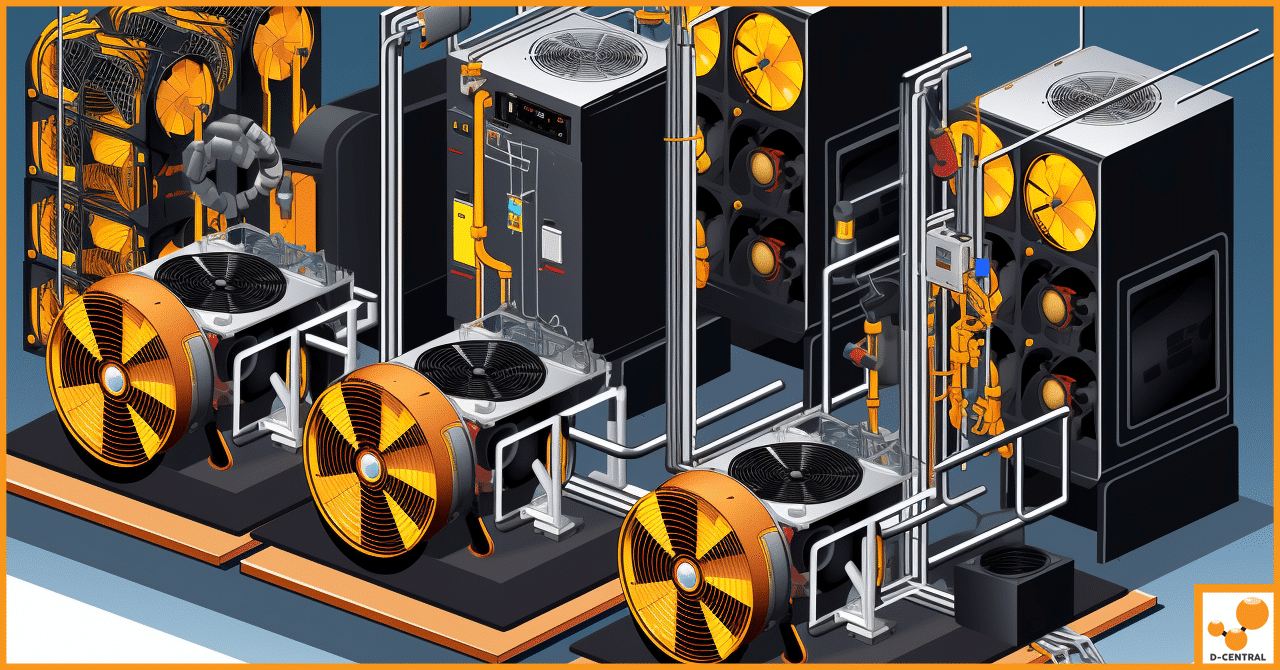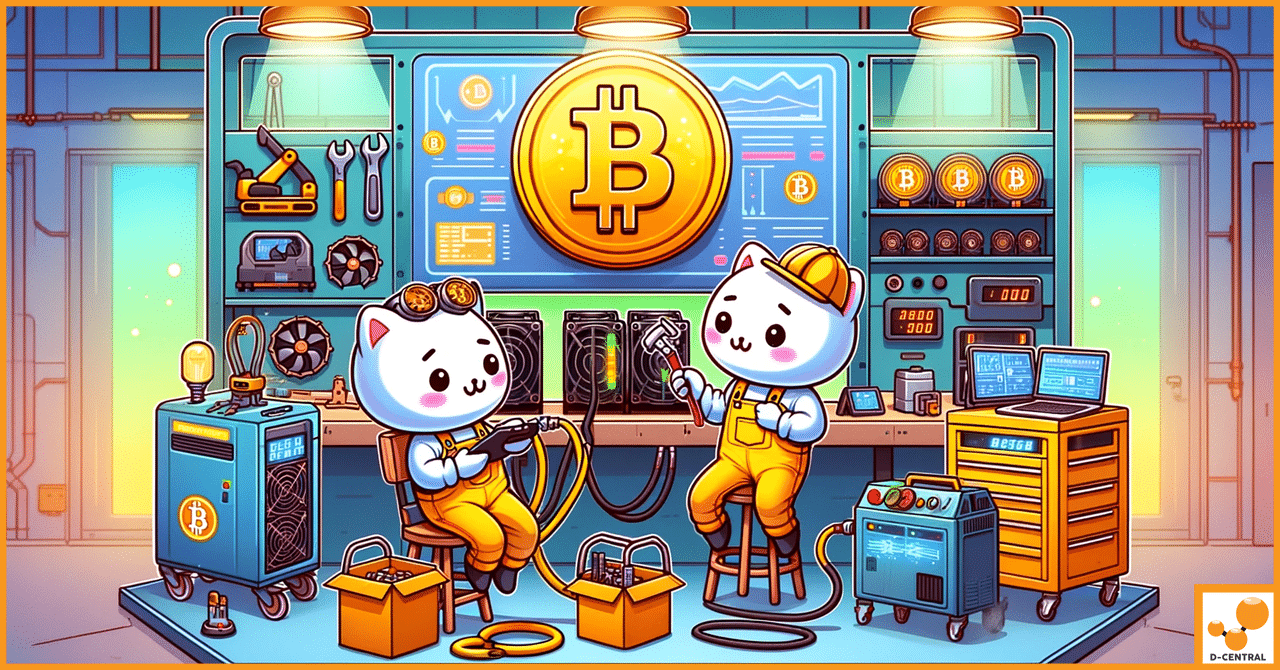
Space Saving Strategies for Bitcoin Mining Optimizing Efficiency in Limited Areas
Welcome to the dynamic world of Bitcoin mining, a critical process that not only fuels the Bitcoin network but also
4479 Desserte Nord Autoroute 440, Laval, QC H7P 6E2
Bitcoin mining is a complex process that requires specialized hardware known as ASIC miners. These machines, such as the Antminer models produced by Bitmain, are designed to perform millions of calculations per second in the pursuit of new Bitcoin blocks. However, this high-performance operation generates a significant amount of heat, which can lead to issues if not properly managed.
One common issue that Bitcoin miners face is the “Temp too high” warning. This warning is an indication that the miner’s internal temperature has exceeded safe operating levels, which can lead to decreased performance, hardware damage, and even complete system failure if not addressed promptly.
Understanding and troubleshooting the “Temp too high” warning is therefore crucial for anyone involved in Bitcoin mining. It ensures the longevity of your mining hardware, maintains optimal mining performance, and ultimately, protects your investment. In this guide, we will delve into what the “Temp too high” warning means, its common causes, and how to troubleshoot and prevent it. Whether you’re a seasoned miner or a newcomer to the field, this guide will provide you with the knowledge you need to keep your mining operation running smoothly.
The “Temp too high” warning is a common issue that arises in Bitcoin mining hardware, particularly in Antminer models. This warning is triggered when the internal temperature of the mining hardware exceeds safe operating levels. The high temperature can be detrimental to the performance of the mining hardware and, in severe cases, can lead to hardware damage and system failure.
The impact of a “Temp too high” warning on Bitcoin mining hardware is significant. When the internal temperature of the miner exceeds the safe limit, the miner may go into a high temperature protection mode and shut down to prevent damage. This results in a zero hash rate, effectively halting the mining process until the issue is resolved.
There are several common causes of a “Temp too high” warning. One of the primary causes is the ambient temperature of the environment where the miner is located. The recommended temperature for the air inlet of the miner is between 5 and 35 degrees Celsius. Temperatures outside this range can cause the internal temperature of the miner to rise, triggering the warning.
Another common cause of a “Temp too high” warning is dust accumulation within the miner. Dust can block the air vents of the miner, preventing effective cooling and leading to an increase in internal temperature. Regular cleaning of the miner can help prevent dust accumulation and keep the miner’s temperature within safe limits.
Identifying a “Temp too high” warning in your Bitcoin mining hardware is crucial to prevent potential damage and maintain optimal mining performance. This warning is typically displayed on the miner’s user interface or through its monitoring software. It indicates that the internal temperature of the miner has exceeded safe operating levels.
The most obvious sign of a “Temp too high” warning is a significant drop in the miner’s hash rate or a complete halt in mining operations. This is because the miner may go into a high temperature protection mode and shut down to prevent hardware damage.
In addition to the warning message and decreased performance, you may also notice excessive heat being emitted from the miner or hear the cooling fans running at maximum speed. These are clear signs that the miner is struggling to maintain a safe operating temperature.
While the “Temp too high” warning can occur in any Bitcoin mining hardware, it is particularly common in high-performance models like the Antminer S19 and S9 due to their high power consumption and heat output. Other models, such as the Antminer T17 and T15, have also been reported to experience this issue, particularly in environments with high ambient temperatures or inadequate ventilation.
In the next sections, we will delve deeper into how to troubleshoot a “Temp too high” warning and how to prevent it from occurring in the future.
High temperature alert and protection is a safety feature built into Bitcoin mining hardware, particularly Antminer models, to prevent damage caused by overheating. When the internal temperature of the miner exceeds a certain threshold, the miner will go into high temperature protection mode and shut down. For example, the S9i hash board has a maximum working temperature of 85 degrees Celsius. If this temperature is exceeded, the miner will shut down to prevent damage.
Accessing the miner’s kernel log can provide valuable information about the miner’s operating conditions. The kernel log will display a high temperature warning if the miner goes into high temperature protection mode. This mode is not exclusive to the S9i model; other miners such as the S9, T9, and L3+ will also go into this mode when the temperature exceeds the allowable limit.
It is essential to identify and address the root causes of high temperature to prevent the miner from repeatedly going into high temperature protection mode. This may involve lowering the ambient temperature, cleaning dust accumulation within the miner, or in severe cases, returning the miner for repair.
When dealing with a “Temp too high” warning, the first step is to identify the cause of the overheating. This involves a series of checks and measures to ensure the miner is operating in a suitable environment and that its cooling systems are functioning correctly.
Remember, continuous operation at high temperatures can cause permanent damage to the miner. If the “Temp too high” warning persists after performing these troubleshooting steps, it may be necessary to seek professional help.
When dealing with a “Temp too high” issue on the Bitmain Antminer S19, the first step is to check the miner’s kernel log for any error messages. If the log indicates a high temperature, it’s important to check the ambient temperature where the miner is located. If the ambient temperature is too high, it can cause the miner to overheat.
Next, check the miner’s fans. If the fans are not working properly, they may not be providing adequate cooling to the miner. Cleaning the fans and ensuring they are working at full speed can help to lower the miner’s temperature.
If the issue persists, it may be necessary to check the miner’s hardware. This can include checking the miner’s heat sinks to ensure they are properly attached and providing adequate cooling. If necessary, it may be necessary to replace the heat sinks or other hardware components.
Case Study: Bitmain Antminer T19
The process for troubleshooting a “Temp too high” issue on the Bitmain Antminer T19 is similar to the process for the S19. Start by checking the miner’s kernel log for any error messages. If the log indicates a high temperature, check the ambient temperature and the miner’s fans.
If the ambient temperature and fans are not the issue, it may be necessary to check the miner’s hardware. This can include checking the miner’s heat sinks and other hardware components. If necessary, it may be necessary to replace these components.
In both cases, if the issue cannot be resolved through these troubleshooting steps, it may be necessary to seek professional help. D-Central Technologies offers a team of ASIC repair experts who can help to diagnose and resolve issues with Bitcoin mining hardware.
To prevent the “Temp too high” issue, there are several best practices that you can follow:
Remember, maintaining an optimal temperature for your Bitcoin mining hardware not only prevents issues like “Temp too high” but also extends the life of your equipment and improves its performance.
While the above steps can help you troubleshoot and prevent the “Temp too high” issue, there may be times when professional help is needed. If you’ve tried the above steps and the problem persists, or if you’re not comfortable performing these steps yourself, it may be time to seek professional help.
D-Central Technologies is a trusted name in the field of ASIC repair and maintenance. Their team of experts has extensive experience in dealing with all kinds of issues related to Bitcoin mining hardware, including temperature-related issues. They can help diagnose the problem, suggest the best course of action, and even perform the necessary repairs or maintenance.
Don’t let persistent issues hamper your Bitcoin mining operations. Reach out to D-Central Technologies today and let their experts take care of your hardware, so you can focus on what you do best – mining Bitcoin.
Understanding and troubleshooting the “Temp too high” issue is crucial for anyone involved in Bitcoin mining. High temperatures can lead to decreased performance, damage to your hardware, and even complete failure of your mining operations. Therefore, being able to identify, troubleshoot, and prevent this issue is of utmost importance.
In this article, we’ve provided a comprehensive guide on how to deal with the “Temp too high” issue, including understanding what it means, how to identify it, troubleshooting steps, and prevention tips. We’ve also provided case studies for specific Antminer models to help you understand the process better.
However, remember that every situation is unique, and what works for one miner might not work for another. Always monitor your hardware closely, keep up with regular maintenance, and don’t hesitate to seek professional help when needed.
For more resources and assistance, don’t forget to reach out to D-Central Technologies, your trusted partner in ASIC repair and maintenance.
What is the “Temp too high” warning in Bitcoin mining?
The “Temp too high” warning is an indication that the Bitcoin miner’s internal temperature has exceeded safe operating levels. This can lead to decreased performance, potential hardware damage, and system failure if not addressed promptly.
What causes a “Temp too high” warning in Bitcoin miners?
Common causes of a “Temp too high” warning are the ambient temperature of the environment where the miner is located and dust accumulation within the miner. The ideal temperature for the air inlet of the miner is between 5 and 35 degrees Celsius.
How can a “Temp too high” warning be identified?
A “Temp too high” warning is typically displayed on the miner’s user interface or through its monitoring software. Signs include a drop in the miner’s hash rate, a complete halt in mining operations, excessive heat being emitted from the miner, and cooling fans running at maximum speed.
What is the High Temperature Alert and Protection feature?
The High Temperature Alert and Protection is a safety feature built into Bitcoin mining hardware, such as Antminer models. When the miner’s internal temperature exceeds a certain threshold, the miner goes into high temperature protection mode and shuts down to prevent damage.
How can “Temp too high” warning be resolved?
The first step in resolving a “Temp too high” warning is to identify the cause of overheating, which may involve checking the ambient temperature, cleaning the miner, rebooting the miner, and checking the miner’s cooling systems.
How can a “Temp too high” warning be prevented?
Preventing a “Temp too high” warning involves controlling the ambient temperature, regularly cleaning the miner, ensuring the miner is set up properly, and keeping a regular check on the miner’s temperature.
When should professional assistance be sought for a “Temp too high” warning?
Professional help should be sought if the “Temp too high” warning persists after performing various troubleshooting steps, or when the individual is not comfortable performing these steps.
DISCLAIMER: D-Central Technologies and its associated content, including this blog, do not serve as financial advisors or official investment advisors. The insights and opinions shared here or by any guests featured in our content are provided purely for informational and educational purposes. Such communications should not be interpreted as financial, investment, legal, tax, or any form of specific advice. We are committed to advancing the knowledge and understanding of Bitcoin and its potential impact on society. However, we urge our community to proceed with caution and informed judgment in all related endeavors.
Related Posts

Welcome to the dynamic world of Bitcoin mining, a critical process that not only fuels the Bitcoin network but also

In any mining setup, the crux of your success lies in the efficient functioning of your mining hardware. Acknowledging this

In the rapidly evolving landscape of the Bitcoin mining industry, Application-Specific Integrated Circuits (ASICs) have emerged as the cornerstone of